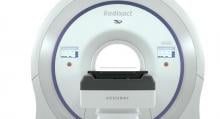While radiation therapy as a discipline is well into maturity, new technology advances continue to drive the field forward. The following is a roundup of some of the most significant products to launch or be introduced in the last 12 months.
Image-guided Radiation Therapy Systems
If you enjoy this content, please share it with a colleague
- Read more about Advances in Radiation Therapy Treatment Systems
- Log in or register to post comments

